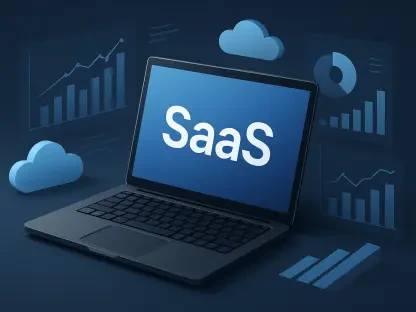In today’s increasingly digital landscape, organizations are relying more than ever on cloud-based services and SaaS applications to support their day-to-day operations. However, with this reliance comes the critical need to ensure robust data protection measures are in place, given that data loss can lead to significant operational, financial, and reputational damage. This article delves into the intricacies and challenges of cloud-to-cloud backup, examining whether the current backup solutions provided by cloud and SaaS providers meet the data protection needs of modern organizations.
Understanding the Shortfalls of Native Cloud Backup Solutions
Many organizations assume that the native backup solutions provided by cloud and SaaS suppliers are sufficient to protect their data. However, these built-in solutions often have significant limitations. For example, while cloud providers focus heavily on the resilience and security of their infrastructure, aiming for high availability with guarantees like “five nines,” this does not necessarily extend to individual data protection.Such native solutions typically do not safeguard against accidental file deletions, user errors, or cyber threats like ransomware. This means that any data mishandling by employees or malicious activities targeting data specifically can go unaddressed, leading to potential data loss incidents. Thus, companies relying solely on these built-in features may find themselves vulnerable to scenarios that these solutions do not cover. Recognizing these limitations is the first step in understanding the need for a more comprehensive strategy to protect data.Additionally, native backup solutions primarily emphasize continuity for cloud service availability rather than individual data integrity. This often creates a false sense of security among organizations, which may overlook the importance of customized backup strategies tailored to their specific risk profiles. Data integrity and recoverability must go beyond merely keeping the cloud service running; they must ensure that every piece of critical data can be retrieved intact, following any potential incident.
The Gap in SaaS Data Protection and Its Implications
Data protection is particularly crucial for organizations using SaaS applications, yet statistics indicate a glaring gap in the backup strategies of these organizations. Research shows that out of approximately 300-400 million users of Microsoft’s SaaS apps, only about 50 million utilize some form of backup, leaving a significant proportion of users exposed to potential data loss. This underscores the urgent need for better and more widespread data protection measures tailored to SaaS environments.Several factors contribute to this gap, including a lack of awareness about the limitations of native backup services and the mistaken belief that SaaS providers are fully responsible for data protection. This misunderstanding of the shared responsibility model can have severe consequences. Without proper awareness, businesses might neglect essential backup procedures, leading to interrupted business operations, financial losses, and compliance issues when data integrity is compromised.Furthermore, compliance with data protection regulations necessitates comprehensive backup strategies that native solutions often fail to provide. Regulatory frameworks in various industries mandate stringent data protection measures, requiring organizations to ensure data confidentiality, integrity, and availability. Failure to comply not only risks data loss but also brings substantial fines and legal consequences. Therefore, businesses must proactively manage their data backup strategies, acknowledging their roles and responsibilities in the shared model to meet both operational and regulatory requirements effectively.
Unraveling the Complexity and Costs of Cloud Storage
The complex nature of cloud storage pricing is another significant hurdle for organizations aiming to safeguard their data. Providers such as AWS, Microsoft Azure, and Google Cloud present intricate pricing models that encompass multiple components including storage tiers, performance levels, and hidden charges like egress fees. This complexity is further magnified when adding native backup options, which often come with separate charges for activities such as data restoring and audit management.Navigating these bewildering pricing structures can lead to unexpected costs, making it challenging for organizations to accurately budget for cloud backup services. Companies must develop a comprehensive understanding of these pricing models or risk overlooking hidden expenses that could inflate their overall cost of data protection. This unpredictability can be particularly frustrating for smaller organizations or those with limited IT budgets, compelling them to seek simpler, more predictable cost-effective solutions.Moreover, continually monitoring and managing these costs consume both time and resources. Businesses must frequently review their storage usage, transfer activities, and associated costs to prevent unexpected financial surprises. This ongoing task can detract from core business activities, requiring significant effort and expertise to ensure cost-effectiveness and compliance with budget constraints. Thus, the need for simpler, transparent, and subscription-based pricing models becomes increasingly crucial.
The Promise of Cloud-to-Cloud (C2C) Backup Solutions
Cloud-to-cloud (C2C) backup solutions have emerged as an effective answer to the limitations of native cloud backup. These solutions involve backing up data already stored in the cloud, offering significant advantages such as faster recovery times, the ability to restore data in multiple locations, and often more transparent and lower-cost pricing models. By leveraging C2C solutions, organizations can enhance their data protection strategies and ensure greater resilience against data loss incidents.C2C backup providers specialize in managing and protecting data across different cloud environments and SaaS applications, ensuring redundancy by maintaining backup copies with multiple providers. This approach not only bolsters data security but also offers a flexible alternative in disaster recovery scenarios. Organizations can restore critical data quickly and efficiently, regardless of the incident’s nature, minimizing downtime and maintaining business continuity.Furthermore, C2C solutions often support multi-cloud environments, providing a unified management interface that minimizes the risk of data loss. This centralized approach simplifies backup management, offering automated backups, comprehensive monitoring, and streamlined recovery processes. The result is a more robust and reliable data protection strategy that addresses the shortcomings of native backup services.
Key Players in the Third-Party Backup Solution Market
Several third-party providers have emerged as leaders in the market, offering comprehensive cloud-to-cloud backup solutions that address the gaps left by native services. Established backup tool suppliers like Barracuda, Acronis, and Veritas have expanded their capabilities to include robust cloud and on-premise solutions, providing organizations with reliable and versatile options for data protection.In addition to these established providers, specialized companies such as Asigra, OwnBackup, Druva, and Veeam offer tailored solutions for specific SaaS platforms and cloud environments. These providers focus on delivering comprehensive data protection services, including regular automated backups, rapid recovery options, and extensive support for various applications. By choosing these specialized solutions, organizations can ensure that their data protection requirements are met effectively, reducing the risk of data loss and enhancing overall resilience.Moreover, the competition among third-party providers drives innovation and improvement in backup solutions. This dynamic marketplace ensures that organizations have access to the latest advancements in data protection technology, enabling them to stay ahead of potential threats and maintain robust data protection strategies.
Evolving Trends in Backup Strategies
As the landscape of digital data storage continues to evolve, there is a noticeable shift towards more sophisticated and comprehensive backup strategies. Organizations are increasingly recognizing the need for hybrid solutions that protect both cloud-based and on-premise data. Such strategies offer greater flexibility and assurance, catering to diverse data protection needs across different infrastructure environments.Hybrid backup solutions provide a seamless approach to data protection, ensuring that all critical data, regardless of its location, is safeguarded. This approach addresses the limitations of single-environment solutions, offering a more comprehensive and resilient strategy that adapts to the organization’s evolving needs.There is also a growing demand for simplified pricing models, driven by frustration with the complexity and unpredictability of cloud-native backup costs. Subscription-based models offered by many third-party providers have gained traction, providing a more straightforward and inclusive approach to managing backup and recovery expenses. These models eliminate hidden fees and offer transparent pricing structures, enabling organizations to budget more accurately and effectively for their data protection needs.As the importance of robust data protection continues to rise, organizations must stay informed about the latest trends and advancements in backup strategies. By adopting innovative and flexible solutions, they can ensure comprehensive data protection and maintain business continuity in an increasingly digital and interconnected world.
Conclusion
In today’s increasingly digital world, businesses are more dependent than ever on cloud-based services and SaaS (Software as a Service) applications to carry out their daily activities. This heavy reliance brings the essential task of implementing strong data protection measures to the forefront. Data losses can have severe consequences, including operational interruptions, financial setbacks, and reputational damage. Therefore, ensuring that data is reliably backed up is crucial for maintaining business continuity and integrity.This article explores the complexities and difficulties associated with cloud-to-cloud backup solutions. It questions whether current backup offerings from cloud and SaaS providers are adequate to fulfill the data protection requirements of today’s organizations. As more businesses adopt cloud-based tools for their operations, the need for tailored and resilient backup solutions becomes increasingly important. These solutions must not only safeguard data but also ensure quick recovery in the event of data loss. As we delve deeper into this subject, we will uncover the requirements for effective cloud-to-cloud backup and assess if the existing solutions meet these essential needs.









